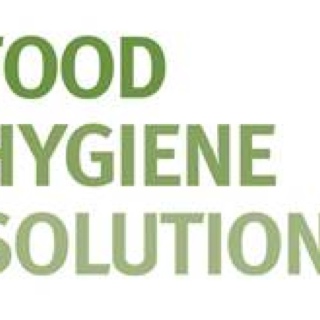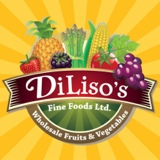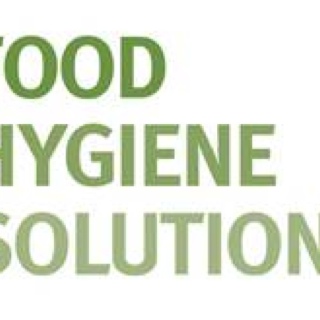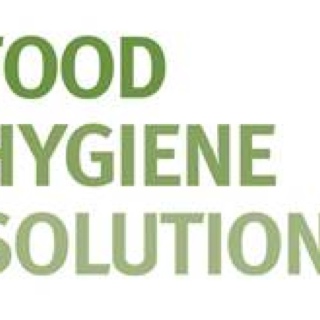Information
-
Document No.
-
Audit Title
-
Client / Site
-
Conducted on
-
Prepared by
-
Location
-
Personnel
Local authority requirements
-
Is Food premises registered with the local authority?
-
EHO inspection reports available & action points if any rectified
Food Safety Management Procedures
-
Is there a documented HACCP or FSMP?
-
Policy documentation available, signed
-
Documentation brought to the attention of staff
-
Does the HACCP cover all areas of food purchase, delivery, storage, production and service within the business?
-
Has the FSMP or HACCP been reviewed?
Stages in Food Preparation Process
Delivery
-
Only suppliers off approved supplier list used?
-
Chilled food delivered @ +8 deg C or colder
-
Frozen food delivered @ -12 deg C or colder
-
Food delivery temperatures recorded
-
Condition of delivery vehicles & driver checked & recorded
-
Date coding & food quality checked
-
Abused or damaged goods rejected
-
Chilled/ frozen food stored without delay
Dry Good Storage
-
Dry Store room or area in clean & tidy condition
-
Food stored on suitable racking off the floor?
-
Fabric & condition of store rooms acceptable
-
Protective light shields (diffusers) cover all light sources
-
Environmental factors satisfactory (temperature, etc)
-
No open dried goods
-
Food not stored near chemicals
-
Date codes transferred to decanted food
-
Strict stock rotation being observed
-
No out of date dried goods identified
Refrigerated / Freezer Storage
-
High risk chilled food stored @ or below +8 deg C
-
Frozen food storage @ -18 deg C or colder
-
Defrosted food never refrozen
-
Use by date codes transferred to containers
-
Food not stored in open containers
-
Cardboard/wooden containers not used in refrigerators
-
Maximum of 3 days shelf life (day of production + 2) on all high risk foods?
-
Glassware not used to store food in refrigerators
-
All stored food date labelled?
-
Food containers sanitised before use
FOOD PREPARATION
Sanitisation
-
Adequate supplies of sanitiser available & used
-
Chopping boards, knives, slicers, etc, sanitised / washed after use
-
Detergent sanitiser used in dishwasher or correct manual washing methods used
Initial Food Preparation
-
Raw food not prepared near cooked food & utensils/surfaces sanitised between each use
-
Disposable towels used to wipe down food surfaces
-
Frozen food defrosted under refrigerated conditions
-
High risk foods kept out of refrigerated conditions as short as possible during preparation
-
If a vacuum packing machine is used is it only used for raw or only used for ready to eat foods?
Advanced cooking and reheating
-
No unnecessary cooing in advance?
-
If food has to be cooked in advance are suitable control measures in place and strictly followed?
-
Blast chiller available?
-
Blast chiller records available?
-
If no blast chiller are hot foods chilled quickly - less than 90 minutes
Freezing of prepared food
-
No freezing of prepared food
-
If prepared food frozen on site are satisfactory controls in place?
-
If prepared food frozen on site is it appropriately labelled?
Food display
-
Cold Food on display kept below +8 deg C or 4 hour rule applied?
Temperature Monitoring Procedures
-
Probe wipes available
-
Temperature test medium available in all refrigerators & used
-
Probe used to check fridge & freezer temperatures
-
Temperature checks at least twice a day?
-
Probe calibrated weekly & checks recorded
Temperature Records
-
Food deliveries (chilled & frozen)
-
All refrigerators
-
All freezers
-
High risk hot food core temperatures
-
Cold food display / salad service units (if applicable)
-
Records kept for at least 6 months
Food Service
-
Adequate protection for display avoiding contamination
-
Display units cleaned & sanitised after use
-
Glass breakage procedures understood & operated
Physical Contamination
-
No loose fittings, nuts,bolts, screws, drawing pins, etc seen above food preparation areas
-
Notice boards not positioned above or in close proximity to food preparation areas
Wood, Packing Materials, Cloths, Wire Wool, equipment etc.
-
Wooden handled equipment not in use
-
Outer packaging i.e. cardboard not on food preparation surfaces
-
No worn / frayed cloths, tea towels, etc
-
Wire-wool, brillo pads, metal scourer, etc not in use
-
Equipment in good condition?
Complaints procedure
-
Customer complaint records available
-
Suitable investigation to customers complaints recorded?
Personal Hygiene Standards
-
All food handlers issued and trained in good hygiene guidance (level one)
-
Finger nails are short, unpolished & clean
-
Good personal hygiene practices being followed (seen @ time of inspection)
-
Clean protective over-clothing worn
-
Over-clothing not worn outside work
-
Personal clothing stored appropriately
-
Only approved jewellery worn
-
Suitable head covering provided & worn for all working within the food preparation area & food rooms
-
Long hair properly tied back, including waiting staff
Hand Washing
-
Did staff wash their hands between tasks (handling raw meat, seafood,, mops, garbage, etc).
-
Do staff wash their hands properly (hands are washed or gloves are changed at critical points)
-
"Wash you hands now" notices displayed in WC areas
-
Bacterial soap provided at all wash hand basins
-
Disposable paper towels provided & used to dry hands
Handling Food
-
Serving spoons / Utensils used wherever possible
Wounds
-
First aid kit properly equipped?
Staff illness
-
Management fully aware of procedures to follow in the event of staff illness
-
Catering staff fully aware of procedures to follow in the event of illness
Maintenance
-
Defect reporting system in place
-
System for actioning urgent defects in place
Pest Control
-
Pest control contract in operation
-
Suitable preventive measures in place for controlling pests & vermin, including clean areas externally, adequate proofing, sound structures, etc
-
Un-screened windows / doors kept closed
-
No active infestation noted
Food Hygiene training
-
Food hygiene training given during induction
-
Managers & all food handling staff fully trained in appropriate safety & hygiene requirements
-
Details recorded on personal training sheets
-
Photocopies of certificates, etc available & held on file
Cleaning schedule, etc
-
Cleaning schedule on display & implemented
-
Schedule monitored daily & checks recorded
-
Deep clean contract in place & included within cleaning schedule
-
Deep cleaning records retained
Cleaning Standards
-
Utensils storeage appropriate
-
Cleaning equipment colour coded
-
Floors & walls / floor / equipment junctions
-
Wall surfaces to hand height (low level)
-
High level areas (who's responsibility)
-
Cooking equipment
-
Internal surfaces of refrigerators &freezers
-
Refrigerator & freezer doors seals
-
Food preparation equipment,
-
Food preparation surfaces, including chopping boards
-
Cooking utensils
-
Wash hand basins & sink units
-
Overall effectiveness of cleaning
Waste Management
-
Waste of animal origin disposed of through recognised contractor
-
General waste Removed by anauthorised waste disposal company
-
Out of date or unfit food appropriately disposed
Sanitary Provision
-
Provision of adequate facilities for staff
-
Clean and well decorated?
-
Provision of suitable washing / drying facilities
-
Hot & cold running water
Changing Rooms
-
Adequate facilities provided
FABRIC & STRUCTURE
Walls
-
Smooth, impervious, non flaking
-
Capable of being easily cleaned
-
Undamaged
Ceilings
-
Smooth, impervious, non flaking
-
Capable of being thoroughly cleaned
-
Lighting adequate and fittings with diffusers
-
Coved at wall joints
Flooring
-
Non-absorbent
-
Anti-slip
-
Without crevices
-
Capable of being thoroughly cleaned
ATP Swabs
-
Food contact surface
-
Hand contact surface
-
Other
Health & safety issues
-
There are no significant health & safety issues
-
Safety policy available, up to date and relevant to location?
-
Risk assessments available, up to date and relevant?
-
Health & safety law poster displayed?
-
Employers liability insurance displayed?
-
Accident book available and properly completed?












